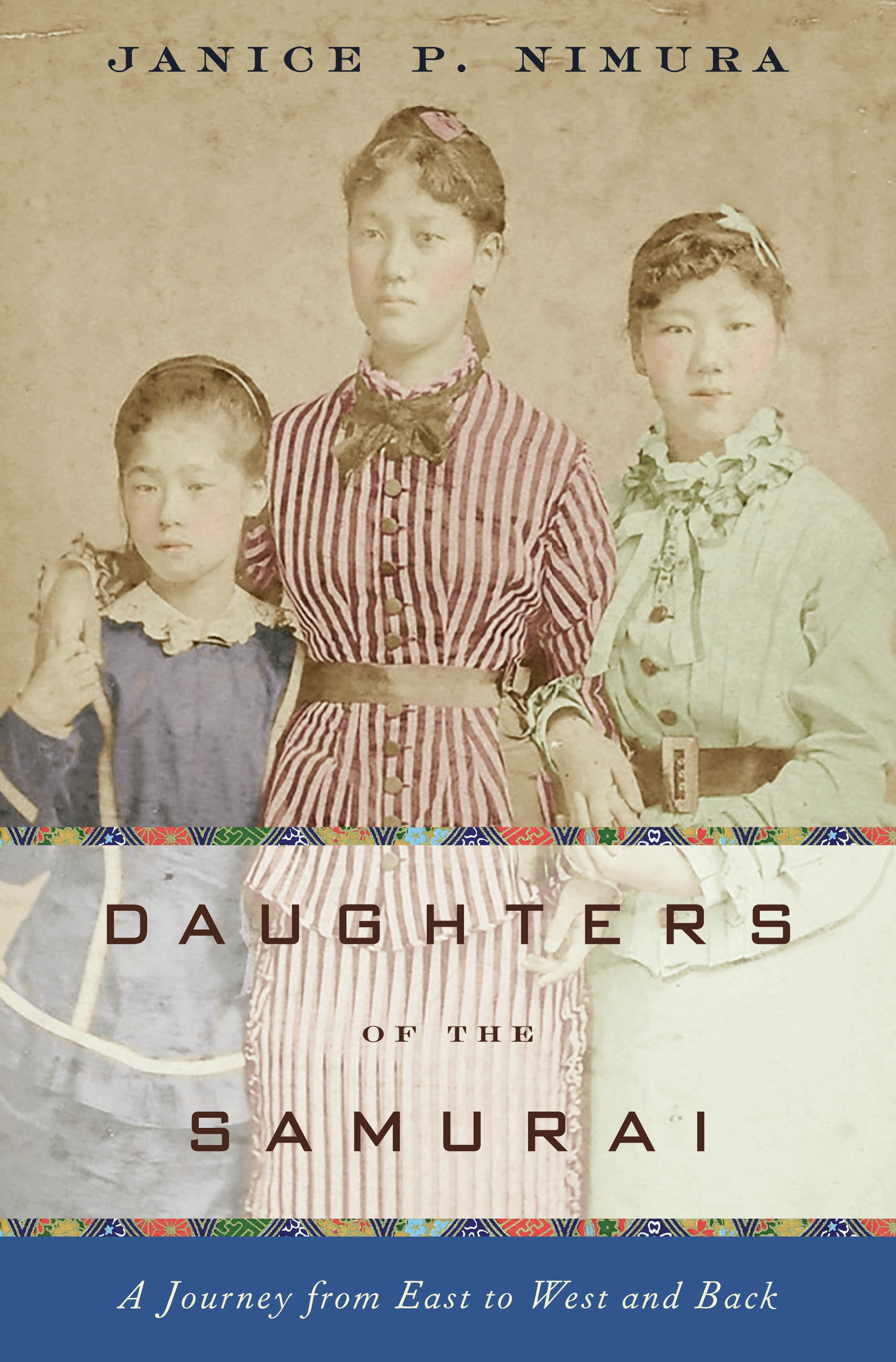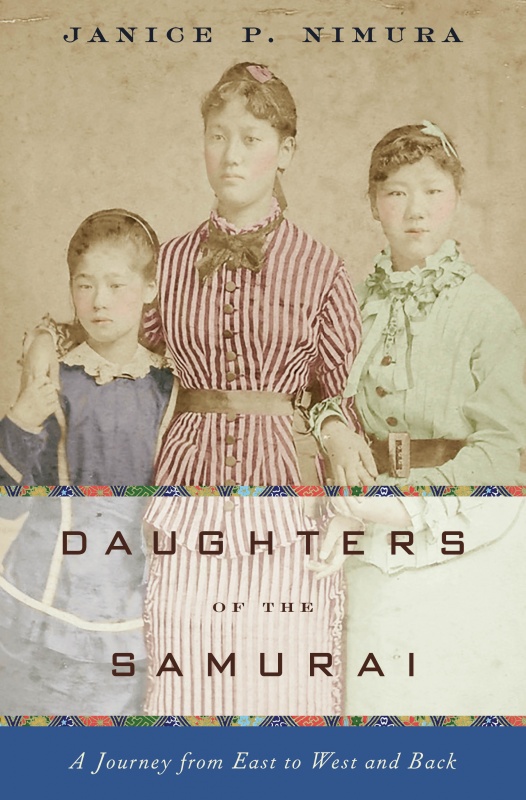06 May / Daughters of the Samurai: A Journey from East to West and Back by Janice P. Nimura [in Christian Science Monitor]

 Daughters of the Samurai profiles three remarkable women who influenced modern Japanese history
Daughters of the Samurai profiles three remarkable women who influenced modern Japanese history
Set aside ample time: You won’t welcome intrusions while reading this unprecedented, true story featuring young Japanese girls who arrived stateside without language or cultural training, and matured into three of the most influential women in modern Japanese history. “A hundred years before ‘globalization’ and ‘multiculturalism’ became the goals of every corporation and curriculum,” writes Janice P. Nimura on the second page of her debut title, Daughters of the Samurai: A Journey from East to West and Back, “three Japanese girls spanned the globe and became fluent in two worlds at once.”
The second half of the 19th century was a tumultuous era in Japan, as the country transitioned from feudal samurai rule to the restoration of imperial power. U.S. Navy Commodore Matthew Perry arrived on troubled Japanese shores in the mid-1850s to forcibly open the insulated country to Western trade. With a burgeoning – albeit “lopsided” – relationship between East and West, Japan began reciprocating voyages outward: a ceremonial contingent was sent to the U.S. in 1860; limited numbers of young men went to study abroad.
The 46-man delegation assembled in fall 1871 was the most impressive to date: “Among them were most of the rising stars of Japan’s new leadership… Many of them would become household names in the decades to come.” Then came the surprising decision to include females: “Educated mothers would raise enlightened sons,” leaders intoned. Thus, a recruiting notice called for the highest-ranking families to apply their daughters for a foreign education to last 10 years. The initial response was dismal: “Who would send a small daughter away while she was still useful at home.… And to America, of all places, where the loud, smelly, yellow-haired, blue-eyed barbarians wore their filthy shoes right into the house and gorged on animal flesh at every meal?”
Five applicants – ages 6 to 14 – came forward after a second round. All were daughters of samurai families. They were the first girls selected for a foreign education, and the first girls of samurai rank to be granted an audience with the Empress of Japan who personally commended them a month before departure on the aptly-named steamer, “America.” When they landed in San Francisco on January 15, 1872, they became “the first Japanese females ever to venture abroad in the service of their nation.”
The two eldest, both 14, would go home within a year, one ill, the other homesick; they faded into obscurity. The three remaining girls would return to Japan – a bonded-for-life trio – as young women determined to permanently improve the status of Japanese women. Sutematsu Yamakawa, 11, would be raised in the home of liberal minister/writer Leonard Bacon, and enter Vassar College. The first female college graduate in Japan, she introduced the concept of philanthropy to Japan’s elite, and rose to the rank of “Princess.” Shige Nagai, 10, lived with pastor/historian John Abbott, and completed a Vassar music program. She was one of Japan’s first female music teachers, and became a Baroness. The youngest, Ume Tsuda, who turned 7 en route, settled into elite Washington, D.C. society as the pampered charge of government official Charles Lanman. She would leave the most lasting legacy in what is now Tokyo’s elite Tsuda College, founded by Tsuda as the Women’s Home School of English in 1900.
In choosing her title, Nimura pays homage to the original A Daughter of the Samurai, Etsu Inagaki Sugimoto, whose 1925 eponymous memoir debuted with the subtitle, “How a daughter of feudal Japan, living hundreds of years in one generation, became a modern American.” Unlike Sugimoto, Nimura’s three “samurai daughters” returned to Japan, each committed in her own way to help modernize her fellow female citizens.
As “the American daughter-in-law of a Japanese family,” Nimura uses her own sojourn East with her Japanese husband as the empathetic motivation in exploring the lives of these three women who, after a decade of being immersed in all things American, landed home with few memories – having lost even their mother tongue. “I recognized these women,” Nimura writes. “I knew what it felt like to arrive in Japan with little or no language, to want desperately to fit into a Japanese home and at the same time chafe against Japanese attitudes toward women.”
That personal exposure empowers the book with potent insight, overshadowing its few narrative flaws – a tendency to overwrite, to be occasionally repetitive and coyly overdramatic. Minor quibbles aside, Daughters proves memorably illuminating, a unique story full of firsts. The focus of these women was other Japanese women, but today, more than a century later, the important “firsts” they promoted still have the power to inspire women worldwide.
Review: “‘Daughters of the Samurai’ profiles three remarkable women who influenced modern Japanese history,” Christian Science Monitor, May 6, 2015
Readers: Young Adult, Adult
Published: 2015
